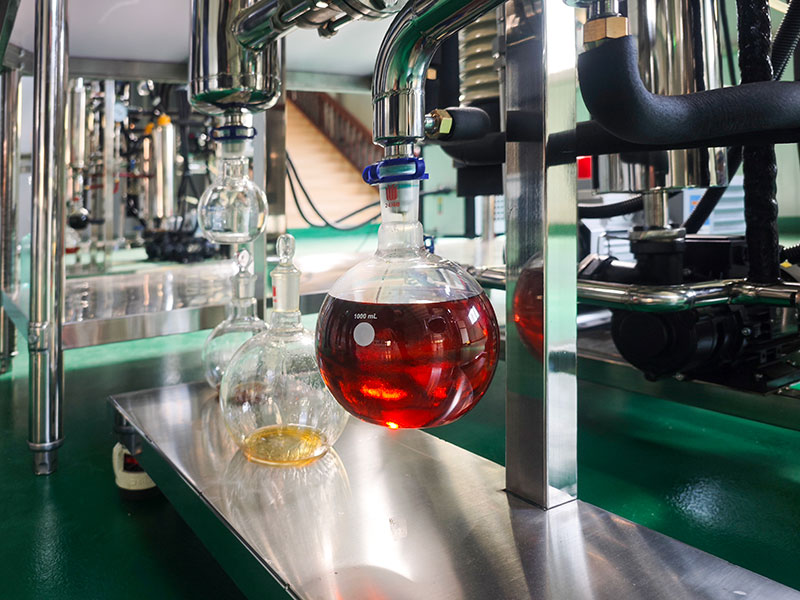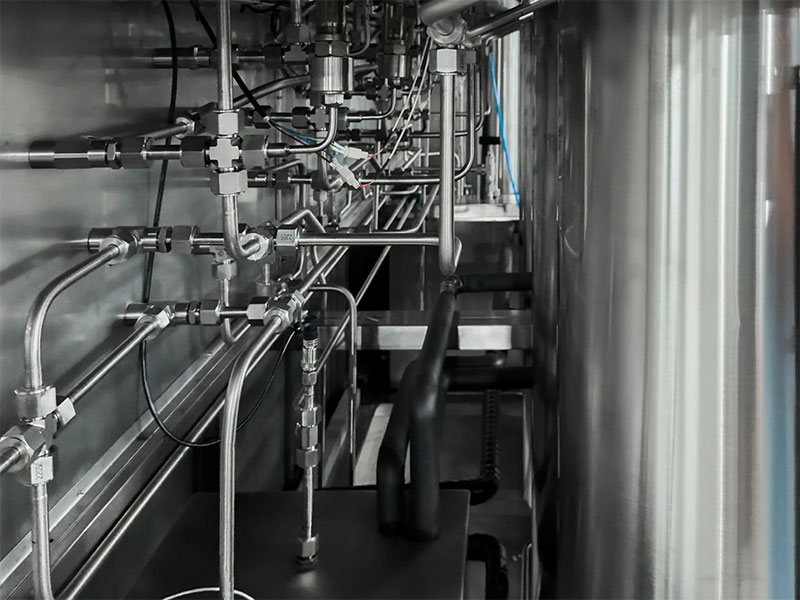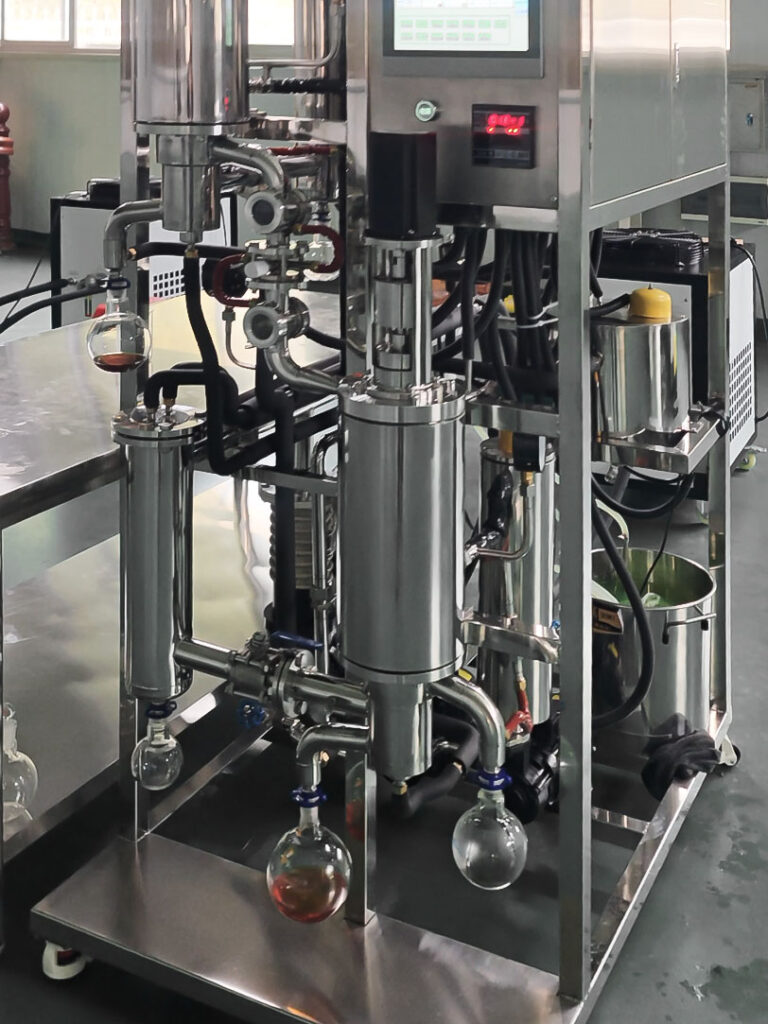Agarwood is a high-value natural aromatic material known for its complex fragrance compounds. To enhance the extraction efficiency and purity of its active ingredients, this study investigates the application of supercritical CO2 extraction and fractional distillation techniques to agarwood. The results demonstrate that under solvent-free conditions, this combination offers an efficient, green solution for producing high-purity agarwood essential oils suitable for natural fragrance and therapeutic use.

I. Supercritical CO2 Extraction of Agarwood (Without Co-solvent)
1.1 Background
Agarwood contains a wide range of volatile and resinous components. Traditional extraction methods, such as steam distillation, often result in heat degradation and loss of delicate aroma compounds. Supercritical CO2 extraction provides a gentle, non-toxic, and solvent-free method, ideal for preserving the complex aroma profile of agarwood.
1.2 Materials and Equipment
- Raw Material Preparation: Agarwood segments cultivated in Guangdong, China, were selected. The material was dried to a moisture content of less than 10% and ground to a 20–40 mesh particle size.
- Equipment Configuration: A laboratory-scale P-30F (120L) supercritical CO2 extraction system was used, consisting of four extraction vessels and two separators.
- Analytical Instruments: Gas Chromatography–Mass Spectrometry (GC-MS) was employed for qualitative analysis of the extract components.

1.3 Optimized Extraction Parameters
- Temperature: Extraction at 65°C; Separation at 60°C
- Pressure: Extraction pressure at 32 MPa; Separation pressure at 8 MPa
- CO2 Flow Rate: 700–800 L/h
- Extraction Time: 2.5 hours.
1.4 Extraction Results
Under optimal conditions (45°C, 32 MPa), the extraction yield reached up to 3.1%. Major extracted compounds included:
- Sesquiterpenes: Agarol, agarospirol, α-cubebene;
- Monoterpenes: Linalool, borneol;
- Resinous aroma constituents.
This proves that supercritical CO2 extraction without co-solvent is capable of efficiently isolating the key aromatic compounds from agarwood, producing a rich, dark brown, and intensely fragrant oleoresin extract.
Example of failed extraction of agarwood extract [More]
II. The distillation technology of agarwood extract to obtain agarwood essential oil
2.1 Technical Rationale
While the CO2-extracted agarwood oleoresin is highly concentrated, it contains a complex mixture of volatile and non-volatile compounds. Short-path (molecular) distillation is employed to isolate fractions with specific aromatic and functional properties, enhancing the value and applicability of the final essential oil product.
2.2 Distillation Setup and Parameters
Equipment: Short-path distillation unit with cold trap and vacuum pump;
Conditions:
- Temperature Range: 80–180°C;
- Vacuum Level: 0.1–1.0 Pa;
- Fractionation Scheme:
- Fraction A (80–120°C): Light monoterpenes;
- Fraction B (120–150°C): Dominant sesquiterpenes;
- Fraction C (150°C+): High-boiling resinous compounds.

2.3 Fraction Profiles and Applications
- Fraction A: Linalool, geraniol — ideal for top notes in perfumery;
- Fraction B: Agarospirol, agarol — provides deep, woody core aroma;
- Fraction C: Resin-rich viscous oils for massage blends and therapeutic balms.
2.4 Market Relevance
Fractionated agarwood oils offer superior olfactory quality and customizable components for specific applications in high-end perfumery, aromatherapy, and functional skincare.
III. Technical Highlights and Conclusions
- ✅ Solvent-Free & Green: Pure CO2 extraction ensures no residual chemicals, making the final product safe and clean;
- ✅ Preserved Aroma Integrity: Low-temperature conditions protect delicate fragrance molecules;
- ✅ Modular Purification: Fractional distillation allows selective enrichment of high-value aroma compounds.
This integrated process establishes an advanced technical pathway for extracting and refining **agarwood essential oil**, suitable for commercial-scale operations in natural fragrance and wellness industries.
FAQ: Supercritical CO2 Extraction and Distillation of Agarwood
Q1: Is a co-solvent used during the extraction?
No. The process uses pure supercritical CO2 without any ethanol or chemical additives, ensuring a solvent-free, natural extraction environment.
Q2: Can the extracted agarwood oleoresin be used directly?
While the extract contains rich active compounds, fractional distillation is recommended to separate volatile oils from heavier resinous components, especially for perfume and therapeutic oil formulations.
Q3: Do you offer extraction equipment or process consulting?
Yes. We provide complete supercritical CO2 extraction and short-path distillation systems for agarwood, including technical customization, setup, and post-extraction support.